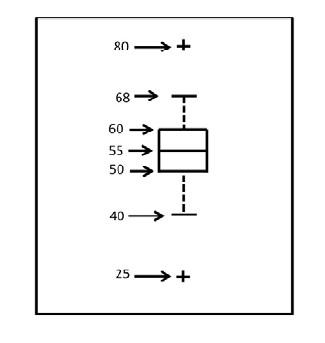Problem 1


A very large bin contains 3 different types of disposable flashlights. The probability that a type 1 flashlight will give over 100 hours of use is 0.7, with the corresponding probabilities for type 2 and 3 flashlights being 0.4 and 0.3 respectively. Suppose that 20% of the flashlights in the bin are type 1, 30% are type 2 and 50% are type 3.
1. What is the probability that a randomly chosen flashlight will give more than 100 hours of use?
2. Given the flashlight lasted over 100 hours, what is the conditional probability that it was a type 1 flashlight?
Solution:
a. Let A be the event {the flashlight will give more than 100 hours of use } and Bi be the event {we choose flashlight of type i}. Then we have:





b. We have:

Problem 2
In HighHatVille (population 1200), a third of the townsfolk have very high hats, more than three feet tall for the hat (not including the person underneath)! But they keep their hats hidden most of the time and bring them out only on HighHatHoliday. They lend the hats out when they aren’t using them though. The MIT students need some high hats for a party, so we decided to visit HighHatVille for a day. Unfortunately we can’t spend too long there, and we need 50 hats. How many people do we need to visit in order to ensure that we get at least 50 hats with more than 70% probability? Hint: We do not expect a numerical answer just a procedure which would give the exact answer.
Solution:
Let n be the number of people we visit. Then the number of hats we get follows a hypergeometric distribution with N = 1200 and M = 400. We want the probability of getting at least 50 hats to be greater than 0.7, in other words:
We can solve it with MATLAB and find n=158 (we expected a value close but greater to 150).

For any Statistics related queries, Call us/ WhatsApp - +1 (315) 5576473

You can mail us at -





Problem 3

The annual snowfall at a particular city is modeled as a normal random variable with a mean of μ = 60 inches and a standard deviation of σ = 20. What is the probability that this year’s snowfall will be between 40 and 100 inches?
Solution:
Let X the annual snowfall. It is:





Problem 4

An airline company accepts 100 reservations for a flight that has 72 available seats. A person booking a reservation does not show up in the flight with probability q =0.1. Find an upper bound in the probability that no traveler showing up is bumped (excluded) from the flight.
Solution:
Let X be the number of people showing up in the flight. Then X is a Bin(n, p) with n = 100 and p =0.9. Itis E[X]= n·p = 100·0.9 = 90 and var(X)= np(1−p) = 9. We are interested in P(X ≤ 72). We have:
















